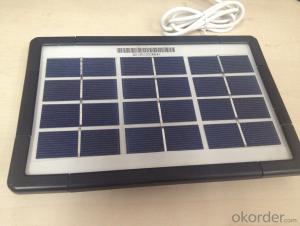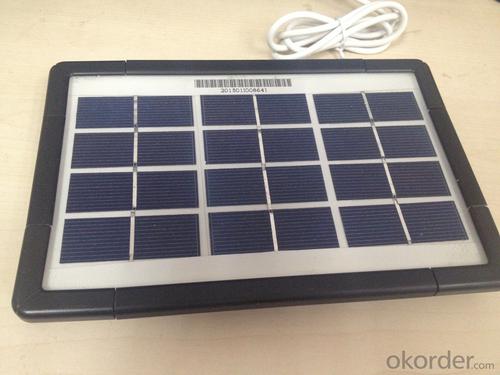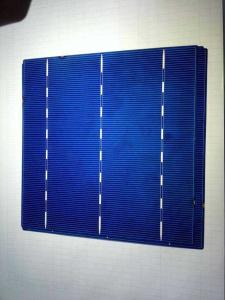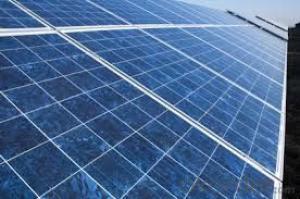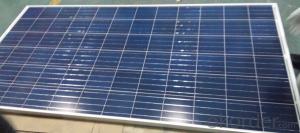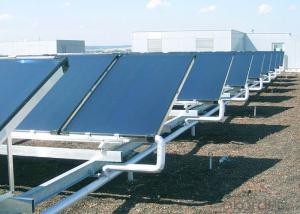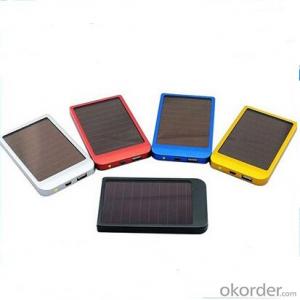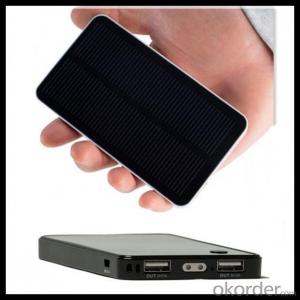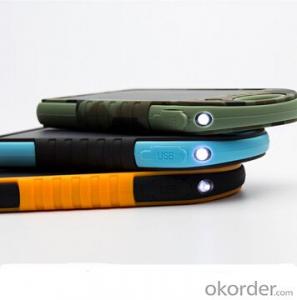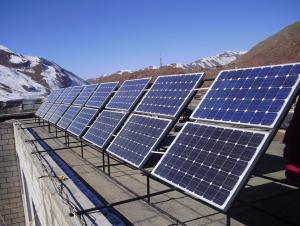High Efficiency Silicon Solar Cells CNBM Solar Mobile Charger for Cellphone - Conveniently Carry
- Loading Port:
- Shanghai
- Payment Terms:
- TT OR LC
- Min Order Qty:
- 1000 pc
- Supply Capability:
- 500000 pc/month
OKorder Service Pledge
OKorder Financial Service
You Might Also Like
Brief Introduction of Solar Mobile Charger
This is a new good product which is quite easy to use. Traditional solar panels cannot use directly, which need to connect a charger controller that can operate LED Lights or other DC applications.
Our product is a new product which revolutionary change the solar panels’ outlooks. We integrate charge controller in the junction box, which didn’t need to add a charge controller additionally. It have to advantage of easy portable, easy use and convenient to take.
With our product of Solar Panels, you can get great profit for this. For this kind product are applied to remote area which is short of electricity.
1. Advantage of Solar Mobile Charger
1)High module conversion efficiency, through superior manufacturing technology.
2) 0 to +5W positive tolerance for mainstream products.
3) Certified to withstand high wind loads and snow loads.
4) Anti-reflective, highly transparent, low iron tempered glass.
5) Excellent performance under low light environment.
2. Specification of Solar Mobile Charger
Main Parts | Specification | Parameters |
Solar Panel | Polycrystalline | 2W |
Solar Control System | Controller | Integrated |
Junction box | ||
Output | Maximum Power | 2W |
Maximum Power Voltage | 5.9V | |
Maximum Power Current | 0.34A | |
Short Circuit Current | 0.38A | |
Open Circuit Voltage | 7.4V |
3. Materials of Solar Mobile Charger
1) Solar cell------conversion efficiency of solar cells: 17%-24%
2) Front glass------3.2mm, high transmission, low iron, tempered glass
3) EVA------excellent anti-aging EVA
4) TPT-------TPT hot seal made of flame resistance.
5) Frame------reinforced anodized aluminum frame.
6) Junction box------IP65 rated, high quality, with diode protection.
7) Charger Controller—Integrated Charger Controller into Junction Box
4. Application of Solar Mobile Charger
1) Any large or small on-grid or off-grid solar power stations.
2) Commercial and industrial building roof-top systems
3) Residential roof-top systems
4) Any commercial or industrial ground mounting systems
5) Solar lights, highway solar street lamp, solar car / electric vehicles, any field of environmental protection.
5. Warranty of Solar Mobile Charger
1) We can supply the solar panel from 5W to more than 300W.
2) Warranty: 3-5 Years products warranty, and 90% of its nominal power after 10 years, 80% of its nominal power after 25 years
3) We do OEM or ODM .
Picture of Solar Mobile Charger
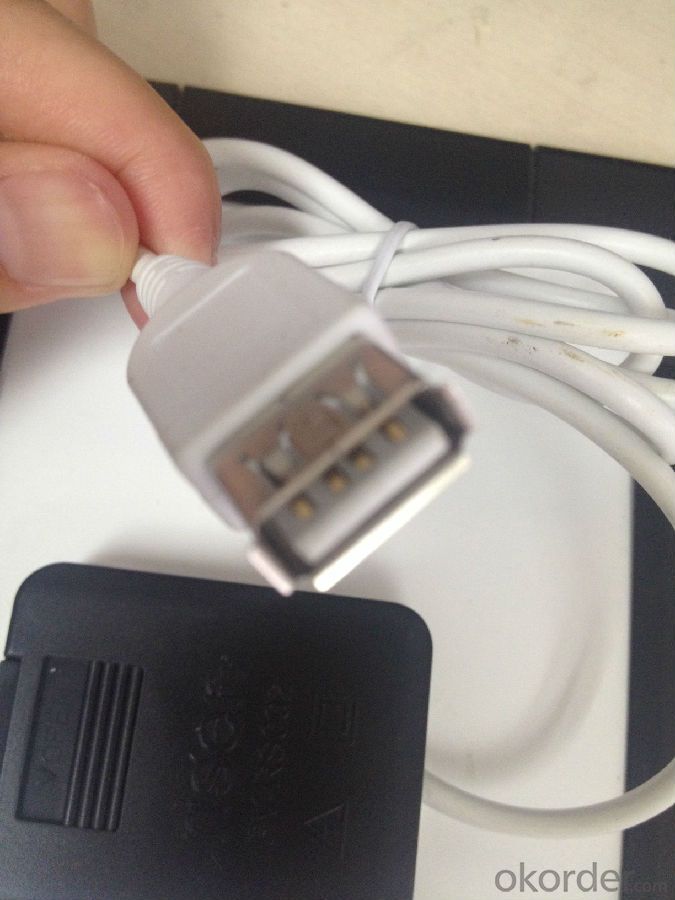
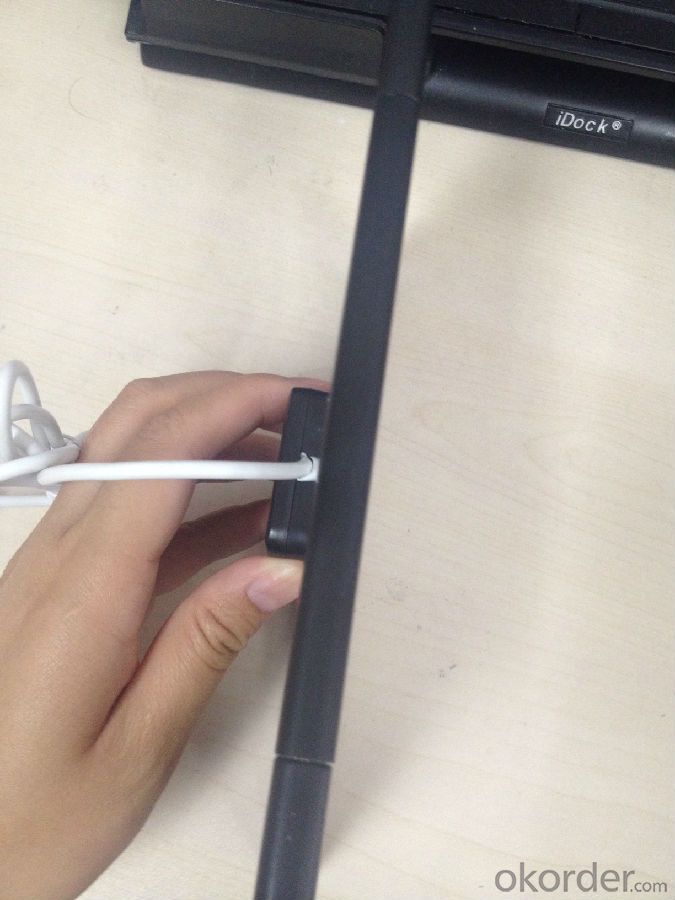
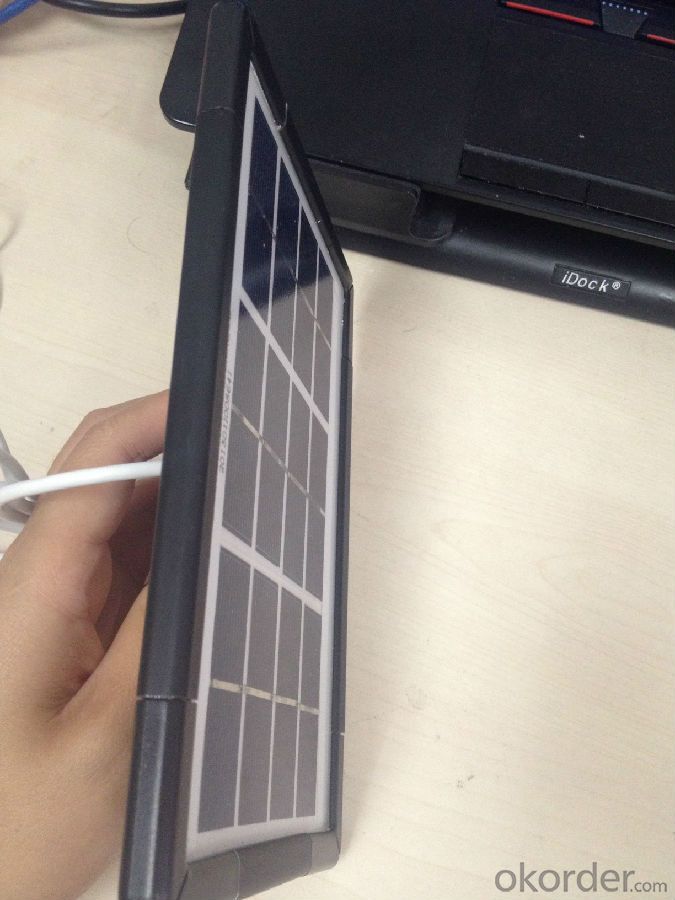
FAQ
1. What’s the MOQ for these kind panels?
For it is small panels with the power output of 2W, the MOQ is at least 1000 Pieces. We will supply samples for our customer.
2. Does it charge for samples?
Sorry, for our panels are not low value products, it is hard for us to supply samples to our customers freely.
3. Can you do OEM for us?
Yes, we supply OEM service for our customers. And we supply customize services to our VIP customer.
- Q: Can solar cells be used in electric bikes or scooters?
- Yes, solar cells can be used in electric bikes or scooters. They can be integrated into the design of these vehicles to harness solar energy and supplement their charging systems. This enables them to recharge the battery and extend their overall range, making them more energy-efficient and sustainable transportation options.
- Q: PV: the battery to the battery charge problem
- I use the BUCK circuit, controlled by the microcontroller, the circuit is not too difficult, are ready, but the understanding of BUCK problems. See a lot of books are written on the battery can be constant pressure charging, feeling can not understand. Now I think they are probably wrong, the voltage across the battery in the BUCK circuit is out of control.
- Q: Can solar cells be used for powering communication systems?
- Yes, solar cells can be used for powering communication systems. Solar cells convert sunlight into electricity, which can be used to power various devices, including communication systems. This makes them a sustainable and environmentally-friendly option for powering such systems in remote or off-grid locations.
- Q: How do solar cells handle electromagnetic radiation?
- Solar cells are designed to efficiently convert electromagnetic radiation, particularly sunlight, into electricity. When electromagnetic radiation, such as sunlight, hits the solar cell, it excites the electrons within the cell's semiconductor material. This excitation creates an electric current, which can be harnessed as electrical energy. Therefore, solar cells are specifically designed to handle and utilize electromagnetic radiation to generate electricity.
- Q: My solar cells are broken, can I just buy one and replace it?
- No, you just can not do properly
- Q: Can solar cells be used to power electric vehicles?
- Yes, solar cells can be used to power electric vehicles. Solar cells can convert sunlight into electricity, which can then be used to charge the batteries of electric vehicles. This technology is being explored and implemented in various forms, such as solar panels integrated into the roof or body of the vehicle, to provide additional power and extend the range of electric vehicles.
- Q: How are solar cells made?
- Solar cells are typically made using a process called photovoltaic (PV) technology, which involves the assembly of semiconductor materials, usually silicon, into thin layers. The silicon is purified and then shaped into wafers, which are then treated with various dopants to create the desired electrical properties. Metal contacts are added to these wafers, and the cells are encapsulated with protective materials. When sunlight hits the cell, the photons from the sunlight create an electric field across the layers, generating electricity.
- Q: How do solar cells affect the environment?
- Solar cells have a positive impact on the environment as they generate electricity from a renewable source, the Sun, without emitting greenhouse gases or harmful pollutants. This reduces reliance on fossil fuels, mitigates air and water pollution, and contributes to the fight against climate change. Additionally, solar energy does not require water for operation, which helps conserve this precious resource. Although there are some environmental concerns related to the production and disposal of solar cells, the overall benefits greatly outweigh these drawbacks.
- Q: What is the role of solar cells in powering water pumping systems?
- Solar cells play a crucial role in powering water pumping systems as they convert sunlight directly into electricity. This renewable energy source eliminates the need for traditional power sources and reduces the reliance on fossil fuels, making water pumping systems more environmentally friendly and sustainable. Additionally, solar cells provide a reliable and cost-effective solution, particularly in remote areas where access to electricity may be limited, ensuring that water can be pumped efficiently for various applications such as irrigation, agriculture, and domestic use.
- Q: What is the role of bypass diodes in shading situations?
- The role of bypass diodes in shading situations is to minimize the impact of shade or partial shading on the performance of solar panels. When a solar panel is partially shaded, the shaded cells can create a significant drop in voltage, reducing the overall electrical output. Bypass diodes are connected in parallel with the shaded cells, allowing the current to bypass the shaded area and flow through the diode. This helps to maintain a higher voltage and prevent the shaded cells from negatively affecting the performance of the entire solar panel.
Send your message to us
High Efficiency Silicon Solar Cells CNBM Solar Mobile Charger for Cellphone - Conveniently Carry
- Loading Port:
- Shanghai
- Payment Terms:
- TT OR LC
- Min Order Qty:
- 1000 pc
- Supply Capability:
- 500000 pc/month
OKorder Service Pledge
OKorder Financial Service
Similar products
Hot products
Hot Searches
Related keywords
